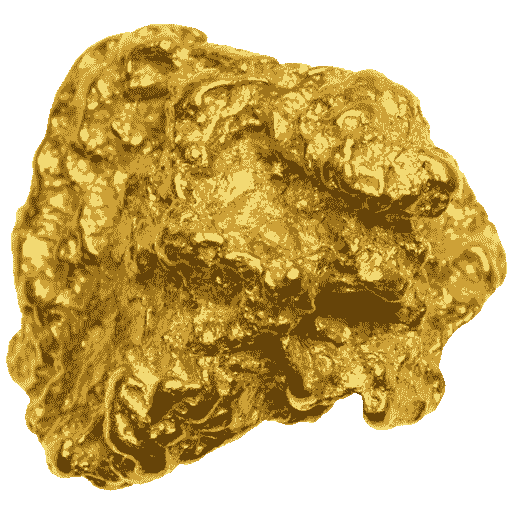Ontario, Canada, has a longstanding reputation as a significant contributor to the country’s gold production. With a rich mining history and abundant geological resources, the province continues to play a crucial role in the gold mining industry. In this article, we explore the factors that make Ontario a prominent gold-producing region, the major gold mines and projects, advancements in mining technology, and the economic impact of gold production on the province.
- Geological Endowment:
Ontario’s geological diversity offers favorable conditions for the formation of gold deposits. The province is home to a range of gold deposit types, including Archean greenstone-hosted deposits, quartz vein systems, and intrusion-related gold systems. These geological settings have resulted in significant gold endowment, attracting exploration and mining activities. - Major Gold Mines and Projects:
Ontario boasts several major gold mines and ongoing projects that contribute to the province’s gold production:
- Red Lake Complex: The Red Lake mining district in northwestern Ontario is renowned for its high-grade gold deposits. The complex includes the Red Lake, Campbell, and Cochenour mines, which have collectively produced millions of ounces of gold over the years.
- Porcupine District: Located in the Timmins area of northeastern Ontario, the Porcupine district is home to several operating gold mines, including the Dome, Hollinger, and McIntyre mines. These mines have played a significant role in the region’s gold production for over a century.
- Detour Lake Mine: Situated in northeastern Ontario, the Detour Lake Mine is one of the largest gold mines in Canada. It is an open-pit operation that produces a significant amount of gold annually and has a considerable mineral resource base.
- Borden Mine: The Borden Mine, located near Chapleau in northeastern Ontario, is an underground gold mine operated by Newmont Corporation. It utilizes innovative mining methods and practices, including electric and autonomous equipment, making it a showcase for sustainable and efficient mining.
- Côté Gold Project: The Côté Gold Project, near Gogama in northeastern Ontario, is an advanced exploration project with significant gold reserves. When developed, it has the potential to become a major gold mine, providing substantial economic benefits to the region.
- Technological Advancements:
Advancements in mining technology have enhanced the efficiency, safety, and environmental sustainability of gold production in Ontario. Some notable technological advancements include:
- Automation and Robotics: Mining companies are increasingly implementing autonomous and remotely operated equipment, reducing the exposure of workers to hazardous conditions and improving operational efficiency.
- Digitalization and Data Analytics: The integration of digital technologies and data analytics enables real-time monitoring, predictive maintenance, and optimized mine planning, leading to improved productivity and cost efficiencies.
- Environmental Stewardship: Mining companies are embracing sustainable practices and utilizing innovative technologies to minimize the environmental impact of mining operations. These include advanced waste management systems, water treatment processes, and reclamation techniques.
- Economic Impact:
Gold production in Ontario has significant economic implications for the province. It generates employment opportunities, both directly and indirectly, supporting local communities and contributing to regional development. Mining companies invest in infrastructure, local procurement, and community initiatives, further stimulating economic growth. Additionally, gold production generates tax revenues and royalty payments that contribute to provincial and federal budgets. - Community Engagement and Indigenous Partnerships:
Mining companies operating in Ontario recognize the importance of community engagement and fostering meaningful relationships with Indigenous communities. Through partnerships, training programs, employment opportunities, and capacity building initiatives, they strive to create mutually beneficial relationships and promote social development. - Environmental Responsibility:
Environmental stewardship is a top priority for gold mining companies in Ontario. They adhere to stringent environmental regulations, implement robust environmental management plans, and actively engage in reclamation and land rehabilitation efforts. Companies aim to minimize their environmental footprint, protect water resources, and conserve biodiversity. - Exploration and Future Potential:
Ontario continues to attract exploration companies looking to unlock the province’s untapped gold potential. Ongoing exploration efforts target underexplored areas, extensions of known deposits, and new geological concepts. Technological advancements, along with a deeper understanding of geological processes, offer exciting prospects for new discoveries and the continued growth of Ontario’s gold industry.
In conclusion, Ontario’s contribution to gold production remains substantial, bolstered by its geological richness, major mines, technological advancements, and commitment to responsible mining practices. The province’s ongoing exploration activities, economic impact, and sustainable mining initiatives position Ontario as a key player in the global gold mining landscape. As the pursuit of gold continues, Ontario’s golden legacy shines bright, forging a prosperous and sustainable future for the province and its communities.


